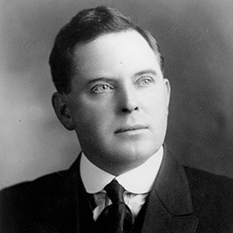1929 Big Bend Highway Telegram

In 1928, the federal and provincial governments had come to an agreement to build the Big Bend highway north of Revelstoke to open up the timber and mining lands between Revelstoke and Mica Creek.
In 1929, Nelson S Lougheed was the Conservative MLA for Maple Ridge and he was Minister for Public Works. Getting the Big Bend project underway was part of his portfolio.
This wonderful telegram illustrates a number of conditions of the day. It was a communication between two MLAs with Lougheed in Ottawa and William A McKenzie in Victoria. McKenzie was the representative for Similkameen and Minister of Mines and Labour in the Simon Fraser Tolmie government from 1928 to 1933. Lougheed might have been in Ottawa to negotiate with his federal counterparts.
In those days, it was very difficult to have private conversations other than face to face. Telephones had operators listening in. Telegrams were also not private and so it was common practice for those in commerce, banking and apparently, politics, to use word replacement codes. Fortunately for us, Mr. Lougheed has written in the translation.

The whole piece reads as follows:
“Reference Big Bend Road. Had conference with Cory and Harkin who are anxious set time limit December 1932 or earlier. This too short and embarrassing politically in view of other projects in governing ridings for instance, North Thompson, Hope Princeton, Prince George East. Would subject us to criticism. Suggest time limit not less than five years dependent on finances.”
The identities of Cory and Harkin are unknown but they may have been high ranking civil servants in the respective departments. Lougheed and McKenzie were Conservatives but at the time, the federal government was Liberal so a certain amount of political horse-trading was inevitable.
The code itself is wonderful. Combinations like “emetic pontoon” and “grandiloquent rinsings” would make this telegram a “keeper” even if we didn’t have the translation.
We have received comments from a reader in Manitoba that shed more light on the code itself:
I came across your museum’s website and enjoyed looking at some of the online material. I was reading about the telegram to Nelson Lougheed on your site. I can add some details about the type of code that was used, if you are not aware of it.
The telegram uses Slater’s Telegraphic Code, which was a very common code in use during this time period. It consisted of a codebook with a dictionary of 25,000 words. Each word was numbered. The sender and recipient would agree upon a number beforehand to use as an offset. The sender would look up the word to encode, and add or subtract this offset value to the number corresponding to the word. In this telegram, an offset value of 40 was used. So, for example, the second decoded word is “big”. In encoding the original message, the sender would look up “big” in the codebook and find that the corresponding number was 2469. He would then add 40, giving 2509. Looking up 2509, he would find that the corresponding word is “biology”, so this is the word that he would transmit in the telegram. Upon receiving the telegram, the recipient would look up the words, find their value and subtract 40 to get the original words.
Because of the painstaking nature of this encoding and decoding (you need to remember that they would have done all of this with pencil and paper), sometimes unimportant words were not encoded, which is why the last part of the telegram is not encrypted.
There appears to be one mistake made by the person decoding the telegram: “grandiloquent” was decoded as “governing”, but an offset of 40 would actually give “government” as the decoded word. An offset of 41 would give “governing”. It was probably a simple mistake resulting from the recipient looking at the wrong line when he was looking up the code words.
I hope this explanation provides some details that you will find useful.
Thank you,
Wayne Chan
University of Manitoba
September 1, 2019